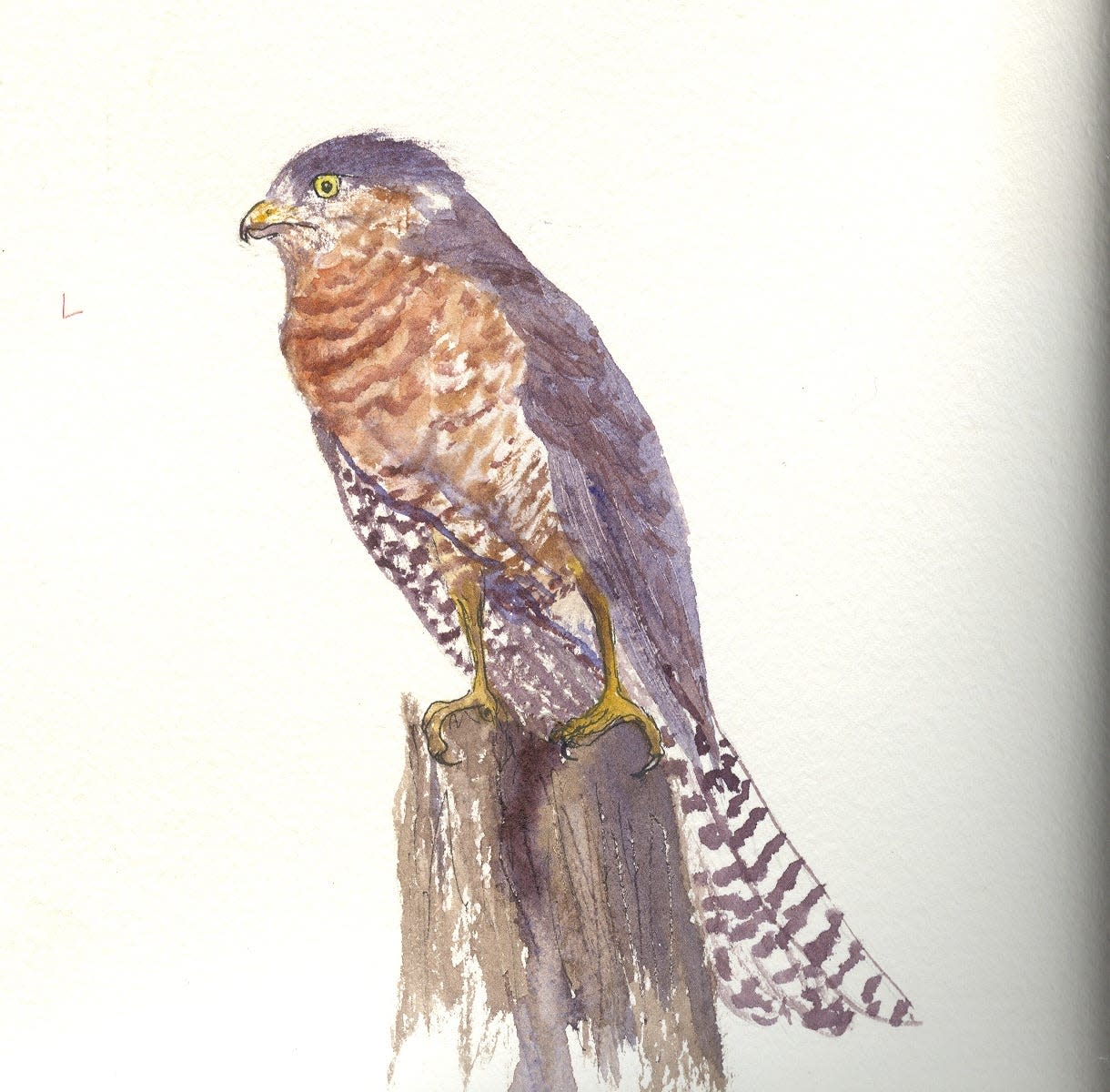Nature Journal: 'Chicken hawks' may raid bird feeders in winter

Our bird feeders have been fairly active this winter. Throughout the day, there's normally a steady stream of titmice, chickadees, nuthatches and other common backyard birds.
Several days before and after Christmas, however, things became eerily quiet. No birds at all would be in sight for extended periods. Our daughter, who lives up the creek, spotted the culprit first; and shortly thereafter, it made an appearance at our place: a sharp-shinned hawk.
Note: This column originally was published Jan. 1, 2010.
While observing your feeders this winter, you may be startled by a blue flash that rockets into the scene and snatches one of your birds. The blue flash will be either a sharp-shinned or a Cooper's hawk — the infamous "chicken hawks" of rural lore that primarily feed on other birds. Because of their slate-blue backs and lightning-quick movements when swooping or tracking prey through brush, they were also widely known in the rural South as "blue darters."
During the Great Depression, when chickens were essential items in the home economies of many Southern families, "chicken hawks" were despised and shot on sight. Writing in "Birds of the South" (1933), North Carolina naturalist Charlotte Hilton Green — normally a mild-mannered, bird-loving sort — waxed eloquent in a chapter titled "Two Bad Hawks" on the vices of these species:
"The two hawks responsible for the hatred and suspicion which farmers have for birds of prey as a whole are the sharp-shinned and the Cooper's. These two villains of hawkdom are the ones that continuously raid poultry yards and war upon small birds. ... Liking young 'fryers' as well as any good Southerner, if these hawks once make a successful raid on the poultry yard, they are likely to make daily visits ... either until they literally clean out the farmer, or the farmer brings down the hawk."
Ornithologist Scott Weidensaul thinks the late 20th-century inclination of the "two bad hawks" to ravage bird feeders came about because of the nationwide decline of chicken coops and yards. His description of a sudden "blue darter" attack is vivid:
"Within a few seconds the soothing tapestry disintegrates. What a moment before had been a flock of songbirds gathered peacefully at a feeder is now a frenzy of alarm calls and flashing wings. ... One junco is an instant too slow in fleeing and is pinned to the ground dead, its blood a few flecks on the snow. The sharp-shinned hawk ... daintily plucks its meal and begins feeding."
The modern bird watcher's reaction is likely to be much the same as that of the old-time chicken owner: outrage. It may soothe your feelings to know that songbirds are such wary entities that fewer than 75 percent of the attacks made by woodland hawks are successful. The whole business of chicken predation by hawks has been grossly exaggerated through the years, often as an excuse to blast away in ignorance at any type of hawk that wanders within gunshot range.
Sharp-shinned (10-14 inches in length) and Cooper's hawks (14-20 inches) are similar in appearance. Adults are slate blue above and barred rusty brown beneath, with short rounded wings and long slender tails. Note that the sharp-shinned has a tail squared at the tip and a comparatively shallow, irregular wing beat, whereas the Cooper's has a tail rounded at the tip and flies with deep, deliberate strokes, often with three flaps and a glide.

George Ellison is a naturalist and writer. His wife, Elizabeth Ellison, is a watercolor artist and papermaker who has a gallery-studio in Bryson City. Contact them at info@georgeellison.com or info@elizabethellisonwatercolors.com or write to P.O. Box 1262, Bryson City, NC 28713.
This article originally appeared on Asheville Citizen Times: Nature Journal: 'Chicken hawks' may raid bird feeders in winter

